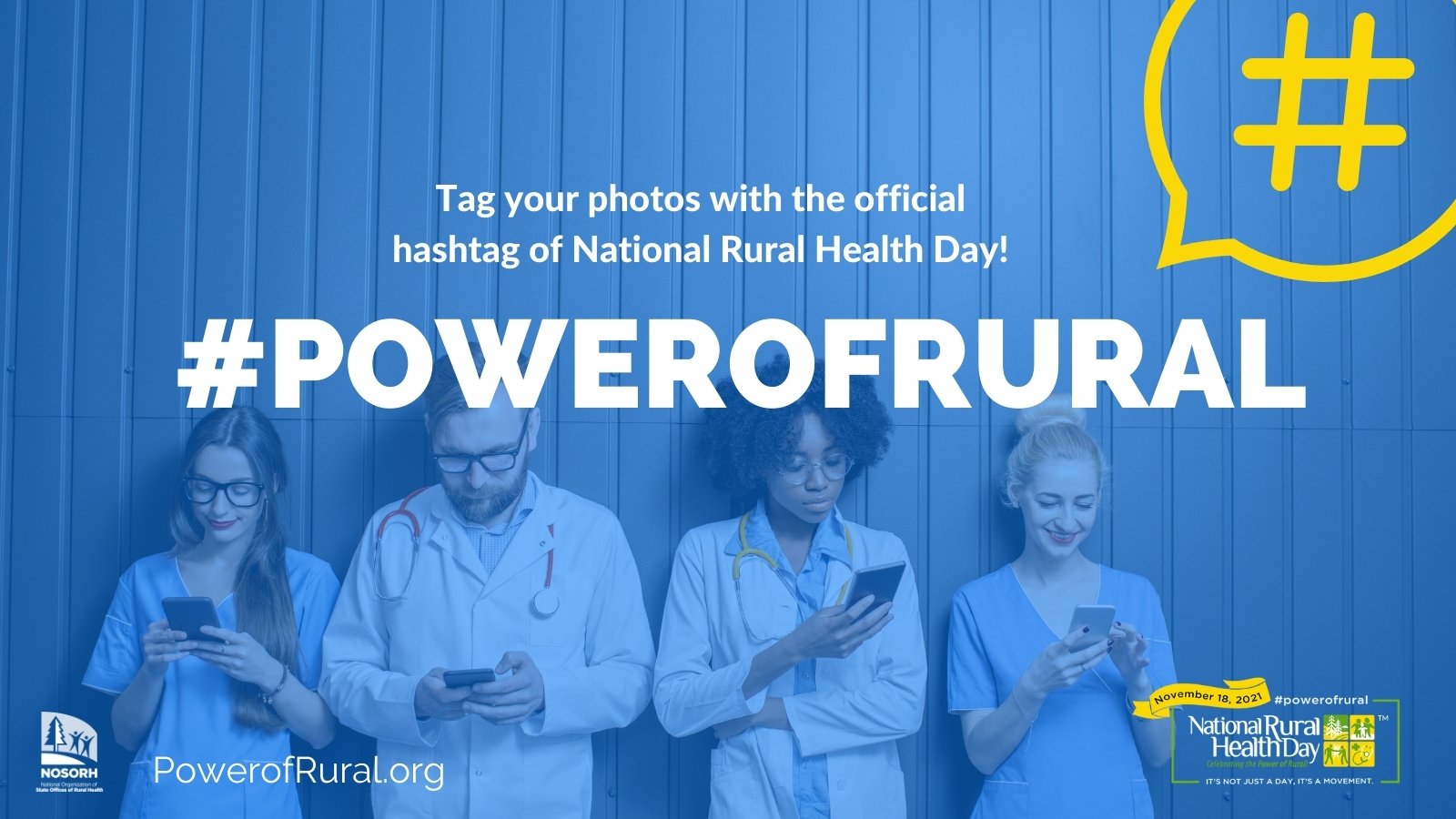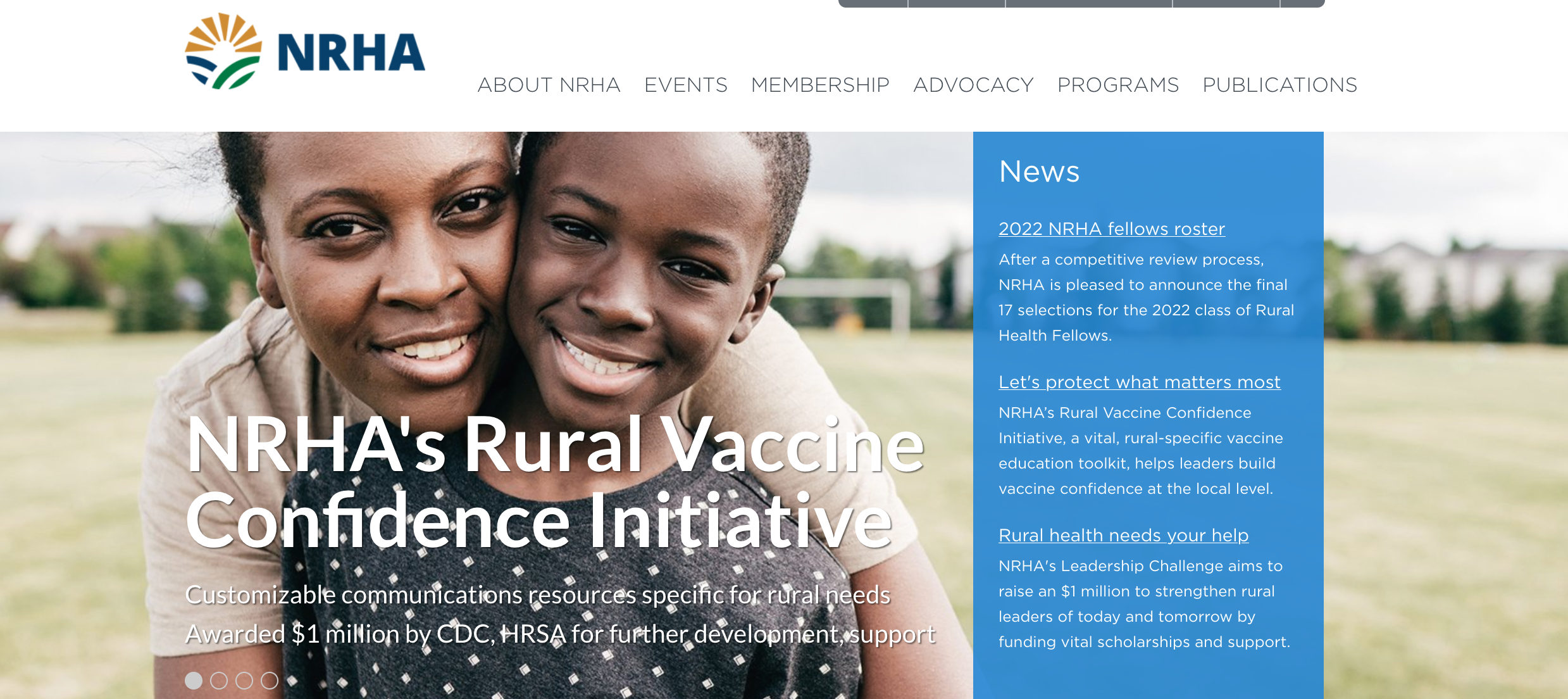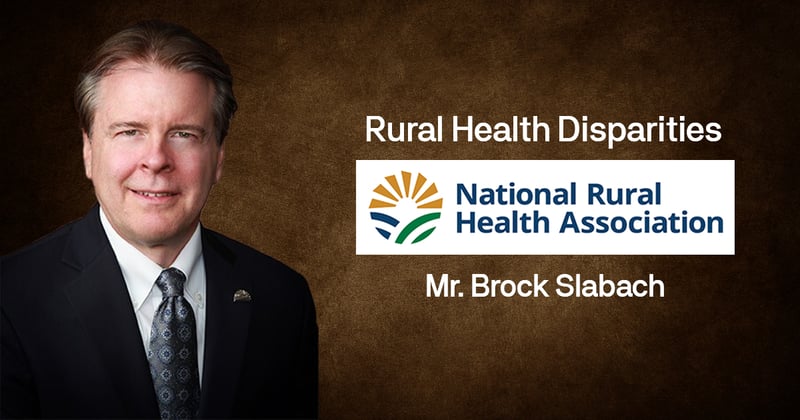Today is National Rural Health Day, a day when the healthcare industry creates awareness about achieving health equity in the many medically underserved rural areas of the USA.
The National Organization of State Offices of Rural Health (NOSORH) observes the third Thursday of each November as National Rural Health Day. The NOSORH website notes that National Rural Health Day is a chance to “Celebrate the Power of Rural” by honoring the spirit of rural America. It offers a chance to shine light on the healthcare challenges rural Americans face.
In honor of National Rural Health Day, the UMHS Endeavour offers a preview of the upcoming UMHS guide MUAs (Medically Underserved Areas) Where Doctors Are Needed with an excerpt of an interview with Brock Slabach, Senior Vice President of Member Services for the National Rural Health Association (NRHA). The NRHA is a nonprofit dedicated to improving the health of rural Americans through advocacy, education, communications and research with more than 21,000 individuals and organizations sharing a common interest in rural health
We spoke to Mr. Slabach about rural health, why there is a need for doctors in rural areas, some of the problems rural patients face, salaries for rural doctors, and more.
 Image courtesy of National Rural Health Association.
Image courtesy of National Rural Health Association.
What should med students know about rural health?
Patients in rural areas are often underserved because they are far from big-city hospitals with the staff and technology necessary for proper medical treatments. Rural patients include the elderly and low-income people who lack health insurance and access to medication and convenient pharmacies. Rural communities often have one small county hospital to serve huge geographic areas and are not equipped to treat patients experiencing catastrophic medical events, such as the COVID-19 pandemic.
There are many rural areas of the USA that are presently underserved. Brock Slabach of the NRHA said he does not have exact statistics but MUAs are defined by the federal government and approximately 60% are in rural areas.
“They are usually in states you would imagine them to be—Kansas, Oklahoma, Mississippi,” Mr. Slabach said. “Looking at the Primary Care map of HPSAs nationwide that HRSA [Health Resources Services Administration] publishes and it’s a good number of places.”
HPSAs (Health Professional Shortage Areas) are given scores for use by the National Health Service Corps “to determine priorities for the assignment of clinicians. Scores range from 1 to 25 for primary care and mental health, 1 to 26 for dental health. The higher the score, the greater the priority,” the HRSA website notes.
 #PowerofRural social media campaign to celebrate National Rural Health Day. Image courtesy of National Rural Health Day/NOSORH.
#PowerofRural social media campaign to celebrate National Rural Health Day. Image courtesy of National Rural Health Day/NOSORH.
Why do residency or practice in rural areas?
There are many reasons why current and prospective medical students and graduates should apply for residency and eventually practice in a rural area.
“I think that it provides significant advantages,” Mr. Slabach said. “First is the broad scope of practice and the second is financial relief. The third is population health experience and involvement and, lastly, a sense of meaningful contribution so those are the broad headings. Under the broad scope for practice, I would say that in any of the specialties—whether it be primary care or family practice, pediatrics, obstetrics, gynecology or internal medicine—those primary care specialties are where you’re called upon really to exercise a lot of your skills in a broad range of practice so it’s not as limited as it might be in an urban area where might see just one or two things.”
Primary care doctors needed in rural areas
IMGs who attended offshore medical schools may find it more difficult to obtain US residencies but that often is simply because of fewer residency slots at American hospitals.
“Because there are not enough spots, they obviously go to USMGs first and usually fill those up with USMGs so it’s just a matter of math,” he said.
However, the situation is changing in many states. In 2020, California started allowing IMGs—including graduates of Caribbean medical schools—the chance to apply for residencies.
Mr. Slabach said he is hopeful that the number of residency slots increases soon.
“I think that’s really going to be the answer to this problem going forward because we’ve had a cap on residents that’s been really inhibiting the ability to get more primary care doctors trained because we don’t have enough residency spots.”
Mr. Slabach is not sure about the exact number of doctors needed for rural MUAs because there are so many conflicting reports, but one specialty is desperately needed in rural America.
“I do know in rural communities in primary care we’re very, very short on the fulfillment of the spots that are open vs. the candidates available willing to go there,” Mr. Slabach said. “The problem in the United States is not necessarily that we don’t have enough physicians but that we have a maldistribution of those toward the urban communities and I think that continues to be part of the problem.”
 Screenshot from the NRHA website. Image courtesy of NRHA.
Screenshot from the NRHA website. Image courtesy of NRHA.
Disparities in rural communities
Numerous disparities make treating patients in rural areas problematic.
“Typically, rural populations are older, poorer and sicker as a general way of saying it,” Mr. Slabach said. “On average, residents in rural areas are much older than their urban counterparts. Secondly, the economic levels of rural communities are much less than urban counterparts and lastly what I’ll talk about more fully is the issue of rural patients being sicker so you will find a lot more comorbidities in rural areas such as diabetes, hypertension, obesity and those common chronic conditions that really take whatever the medical condition of the patient is and complicates it even more with those secondary and tertiary diagnoses, so I think that the challenges in rural areas is in chronic disease in rural communities in the United States might be related to some of these other issues—like substance abuse disorders, so there is that in the background constantly working. And we have a lot of occupational hazards in rural areas due to the high risk of jobs being performed, particularly in agriculture.”
Older adults in underserved rural areas
The average patient in rural areas is older than in large cities.
“Obviously, the elderly, 65 and older, represent a larger share of the population in a rural community than in an urban counterpart so you have some issues related to aging and treatment and again it is very critical to have a robust availability of primary care.”
Opportunities for women & IMGs in rural areas
Rural medicine is getting more diverse because of the makeup of the US.
“Women make up more than half of the medical school graduating classes these days so we’re seeing more diversity in terms of gender but also we’re trying to work on racial and ethnic diversity and I know that’s something many facilities are working on and planning to represent those providers in communities where you have high rates of people of color and diversity.”
There are many IMGs currently working in rural medicine, Mr. Slabach said.
“I know of IMGs and I recruited several at my hospital when I was an administrator. I recruited one from a medical school in Korea and one from Uruguay and of course they completed an American residency so I know of those who went to offshore medical schools. But one of the recruitment mechanisms is the J-1 visa waiver and I know that a number of facilities are still using those, even when immigration was restricted over the last several years, we’re still keeping that on the radar and that’s a way that many facilities are filling some of their [residency] spots.”
There are opportunities for IMGs to work in rural settings, in a number of specialties.
“I know some rural hospitals like mine, we had a general surgery program, we had anesthesiology; we always needed general surgeons and I consider that, frankly, to be a primary care specialty in a rural context, that’s my definition; it’s not official. I think it’s important to have that available and not all facilities do but if you do, you’re really very lucky. So, my point is specialties are always needed in rural communities and you’ll find some rural communities that have a general surgery program which of course needs anesthesia. A lot of rural communities have pediatricians, even though that’s considered a primary care specialty. We even have some rural hospitals that have specialists like orthopedic surgery and all kinds of specialties so it just depends on the facility, the demand and how they are able to organize their services.”
Competitive salaries for doctors in rural areas
Salaries in rural areas are indeed competitive.
“I can say from my experience as a hospital administrator that the physicians in my area were in probably the Top 25 or 50 percentile of salaries nationwide. The reason is many rural physicians are very busy because there’s obviously a shortage so you can be as busy and as productive as you want to be, and if you arrange your compensation package appropriately and have some incentives for higher volume, then you can do extremely well in a rural community. I stress that when I talk to people who are considering rural practice.”
Mr. Slabach said there are many reasons why medical students and young doctors should consider applying for a residency in rural areas. Most rural hospitals will accept IMGs who have completed clinical rotations at US hospitals and scored well on the USMLE Step 1.
“I think rural areas are tremendous places to consider a practice and usually the lifestyle is better, since there is not as much traffic,” he said. “Especially with Covid, keep in mind that rural areas are very attractive places for people to relocate because many felt safer out in the country instead of the city so looking ahead now to future pandemics and other diseases that may be circulating, it offers a lot of different attributes.”
(Top image): Brock Slabach, Senior Vice President of Member Services for the National Rural Health Association (NRHA).
Online resources about rural health
National Rural Health Association
https://www.ruralhealthweb.org/
Rural Health Services Consortium (Tennessee)
HRSA Rural Health Program
The US government’s Health Resources and Services Administration (HRSA) has extensive information on rural health stats and services through the Rural Health Program.
https://data.hrsa.gov/topics/rural-health
National Rural Health Day
(Top image): Brock Slabach, Senior Vice President of Member Services for the National Rural Health Association (NRHA).

Scott is Director of Digital Content & Alumni Communications Liaison at UMHS and editor of the UMHS Endeavour blog. When he's not writing about UMHS students, faculty, events, public health, alumni and UMHS research, he writes and edits Broadway theater reviews for a website he publishes in New York City, StageZine.com.
















